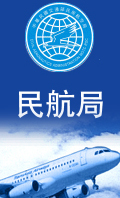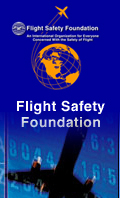|
жӯЎиҝҺе…үиҮЁ йЈӣе®үе®Је°ҺзҹӯзүҮ
|
дәәж°Ј340
On the evening of 25 September 2019, the flight crew of an ATR 72 aircraft, registered VH-VPJ and operated by Virgin Australia Airlines, received a clearance to lineвҖ‘up on runway 35 from intersection ‘Golf’ at Canberra Airport, Australia. While taxiing to the runway, the flight crew inadvertently lined-up on runway 30. Almost immediately after commencing the take-off roll, and at about the same time air traffic control instructed them to ‘stop’, the flight crew rejected the takeвҖ‘off. The aircraft was reвҖ‘positioned for a departure from runway 35. The ATSB found that the flight crew elected to depart from intersection ‘Golf’ for runway 35. Due to the close proximity of the aircraft’s parking bay to the ‘Golf’ runway holding point, the selection of this intersection reduced the distance, and therefore the amount of time available for the flight crew to complete their pre-departure checks. After passing through the holding point, the captain taxied the aircraft onto runway 30, following the lead-on lights for that runway, while the first officer’s attention was focussed on completing procedures and checklists. This likely resulted in the flight crew having reduced awareness of the runway environment and aircraft orientation. The lead-on lights to runway 30 were active with the taxiway lighting and the lead-on lights to runway 35 were activated when the holding point stop bar at intersection ‘Golf’ was turned off by air traffic control. Therefore, both runway lead-on lights were active. This increased the risk of an aircraft being manoeuvred onto the incorrect runway, particularly at night and/or in low visibility conditions. In this case, the captain, who recalled being focused on the lead-on lights, followed the first set of lights that led to runway 30. The ATSB also established that Virgin Australia Airlines’ ATR72 Before take-off procedure did not specify when ‘ready [for take-off]’ was to be communicated to air traffic control. This increased the risk of procedures and checklists being completed while the aircraft was taxiing onto the runway, at a time when monitoring was critical. Virgin Australia Airlines’ procedures applicable to all the aircraft in their fleet did not include a runway verification check using external cues, including runway markings, signs and/or lights.
дәәж°Ј340
|
жҗңе°Ӣ
йЈӣе®үе°ҸеҚҡеЈ« зҰҒйЈӣеҚҖпјҲNo-fly zoneпјүеҸҲзЁұзҰҒиҲӘеҚҖпјҢжҢҮзҡ„жҳҜжҹҗдёҖең°зҡ„дёҠз©әпјҢзҰҒжӯўд»»дҪ•жңӘ經зү№еҲҘз”іи«ӢиЁұеҸҜзҡ„иҲӘз©әеҷЁпјҲеҢ…жӢ¬йЈӣж©ҹгҖҒзӣҙеҚҮж©ҹгҖҒзҶұж°ЈзҗғзӯүпјүйЈӣе…ҘжҲ–йЈӣи¶Ҡзҡ„з©әеҹҹгҖӮ з¶ӯеҹәзҷҫ科 |






 12-16 йЈӣж©ҹеңЁйЈӣ ж©ҹй•·еңЁй ӯзӯ...
12-16 йЈӣж©ҹеңЁйЈӣ ж©ҹй•·еңЁй ӯзӯ...







